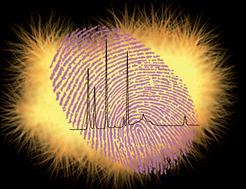Probing gunshot residue, sweat and latent human fingerprints with capillary-scale ion chromatography and suppressed conductivity detection
Abstract
An investigation into capillary-scale ion

* Corresponding authors
a
Analytical & Environmental Sciences Division, Dept. of Forensic Science & Drug Monitoring, School of Biomedical Sciences, King's College London, 150 Stamford Street, London, United Kingdom
E-mail:
leon.barron@kcl.ac.uk
Fax: +44 (0)207 8484980
Tel: +44 (0)207 8483842
An investigation into capillary-scale ion

 Please wait while we load your content...
Something went wrong. Try again?
Please wait while we load your content...
Something went wrong. Try again?
E. Gilchrist, N. Smith and L. Barron, Analyst, 2012, 137, 1576 DOI: 10.1039/C2AN16126E
To request permission to reproduce material from this article, please go to the Copyright Clearance Center request page.
If you are an author contributing to an RSC publication, you do not need to request permission provided correct acknowledgement is given.
If you are the author of this article, you do not need to request permission to reproduce figures and diagrams provided correct acknowledgement is given. If you want to reproduce the whole article in a third-party publication (excluding your thesis/dissertation for which permission is not required) please go to the Copyright Clearance Center request page.
Read more about how to correctly acknowledge RSC content.
 Fetching data from CrossRef.
Fetching data from CrossRef.
This may take some time to load.
Loading related content
